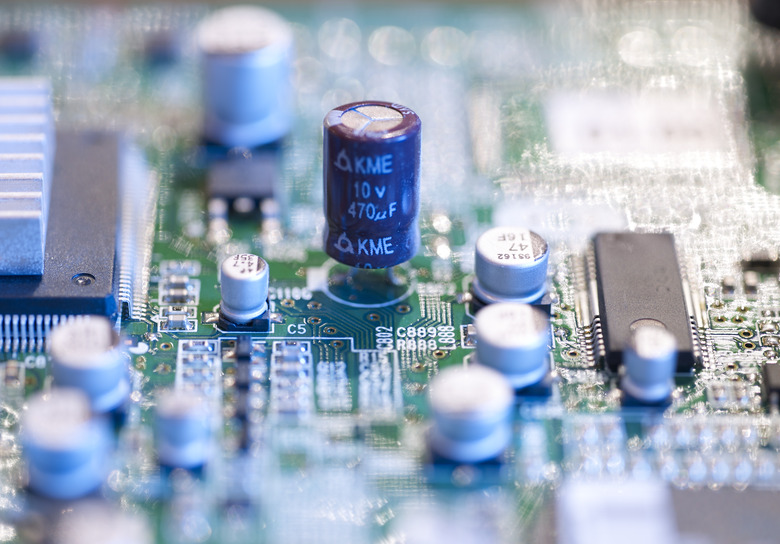List Of Uses For Capacitors
Capacitors are used in almost all electronic products in a variety of ways. On the simplest level, they are charged by a current, then they release that current all at once. This may not sound particularly impressive, but it is this charging and discharging that operates the flash on your camera and the tuning dial on you radio, and it stops your loudspeakers from exploding.
Timing
Timing
Capacitors can be used in a time-dependant circuit because their charging and discharging takes place at regular intervals. This could be connected to any light-emitting diode or loudspeaker system, and it's likely that any flashing light that you see or regular beeping uses a timing capacitor.
Smoothing
Smoothing
Electricity from an alternating current supply oscillates at regular intervals, meaning that the charge on a circuit constantly changes between positive and negative. The website play-hookey.com explains how with the use of transformers the output power from an AC source will be far greater than from a direct current source. Yet many household appliances use DC electricity through the use of a capacitor. A capacitor can convert AC to DC by "smoothing" the current. Imagine AC current as a single line constantly snaking up and down. A capacitor will charge as this line rises and at the peak will discharge. Once fully discharged, it starts to charge again, so that the output current never has time to fully dip and operates as if it were direct current.
Coupling
Coupling
Capacitors can let AC current pass yet block DC current in a process explained by the Electronics Club as "Capacitor Coupling." This is used in the case of a loudspeaker. Speakers work by converting an alternating current into sound, but they could be damaged by any direct current that reaches them. A capacitor prevents this from happening.
Tuning
Tuning
Variable capacitors are used in tuning circuits on radio systems by connecting them to an LC oscillator, as explained at Electronixandmore.com. The capacitor charges and then discharges into a coil of wire, generating a magnetic field. Once the capacitor is fully discharged, the magnetic field starts to collapse, recharging the capacitor. This charging and discharging current takes place at regular intervals, but it can be changed by altering the capacitor. If the frequency of these intervals is the same as the frequency of a nearby radio station, then the amplifier in the radio will strengthen this signal and you will hear the broadcast.
Storing Energy
Storing Energy
In some cases, like the flash circuit of a camera, you need a buildup of energy and then a sudden release. This is exactly what a capacitor does. In the camera circuit, you press the button to take the picture and a charge is released to the capacitor. Once it has reached the peak level, the capacitor discharges, causing a flash.
Cite This Article
MLA
Garner, Ross. "List Of Uses For Capacitors" sciencing.com, https://www.sciencing.com/list-uses-capacitors-8059446/. 13 March 2018.
APA
Garner, Ross. (2018, March 13). List Of Uses For Capacitors. sciencing.com. Retrieved from https://www.sciencing.com/list-uses-capacitors-8059446/
Chicago
Garner, Ross. List Of Uses For Capacitors last modified March 24, 2022. https://www.sciencing.com/list-uses-capacitors-8059446/
